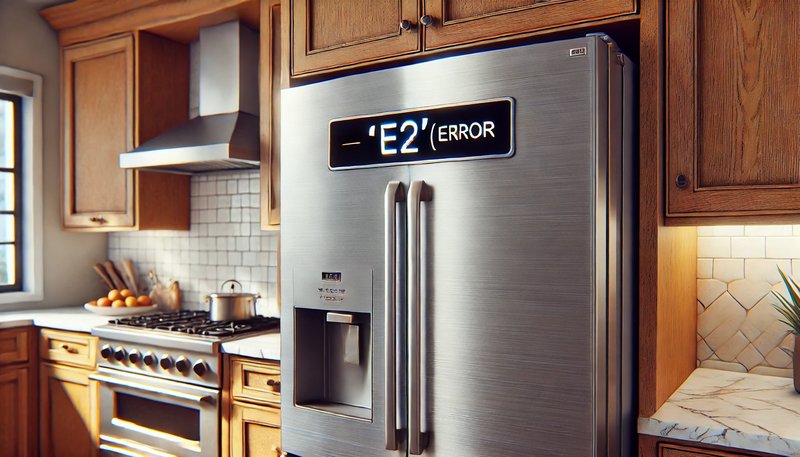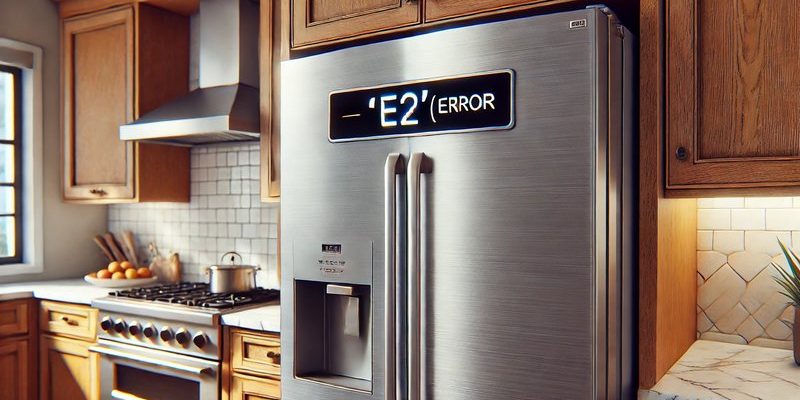
Here’s the deal: Error E1 in GE refrigerators typically indicates an issue with the freezer fan. This fan is crucial because it helps circulate air to keep your freezer’s temperature consistent. Without it working properly, your freezer might not be able to stay cold, or it could even start freezing up too much. Think of it like trying to bake a pie in an oven that can’t hold its temperature steady. The results can be… less than ideal.
Ignoring this error isn’t just about risking the quality of your ice cream, though. A malfunctioning freezer fan can lead to energy inefficiency, potentially higher utility bills, and greater wear and tear on the other parts of your fridge. So, what can you do about it?
Understanding the GE Refrigerator Error E1
Before diving into fixes, it helps to understand what this error actually means. In simple terms, the E1 error code is your refrigerator’s way of saying, “Hey, something’s not right!” In the case of the GE models, this error usually suggests issues with the frost build-up in the freezer or the fan itself.
Think of the freezer fan like a tiny fan in your computer. Just as your computer’s fans keep the processor from overheating, the freezer fan helps your fridge maintain a steady, cold environment. Without it, the freezer compartment could become too warm, affecting food storage, or too cold, leading to frost build-up that compounds the problem. If ignored, this issue can reduce the efficiency of the refrigerator and stress other components, much like how a poorly maintained car might affect its overall performance.
Further complications arise when frost accumulates unevenly in the freezer. This frost isn’t just a cold inconvenience; it can actually obstruct air circulation, making the freezer’s job a lot harder. Recognizing the E1 error early is essential to preventing these cascading issues, much like catching a leaky pipe before it floods your basement.
Why You Shouldn’t Ignore This Error
You might be tempted to dismiss the E1 error, especially if the refrigerator seems to be doing its job for now. However, ignoring it can lead to more significant problems down the line, akin to ignoring a small crack in a dam. Over time, the strain of running inefficiently can cause other parts to malfunction or even fail. For instance, the increased workload can wear out the compressor—your fridge’s equivalent of a car engine—faster than normal, leading to pricey repairs or replacements.
Moreover, the ICE build-up caused by inadequate air circulation can also cause the thermostat to misread temperatures. Imagine trying to measure the temperature outside while standing next to a heater; your readout won’t be accurate. This means your fridge might either overcool or not cool enough, affecting not just energy bills but also food safety.
It’s essential to address the E1 error not just for the sake of your refrigerator’s health, but also to keep your food fresh and your wallet happy. It’s a simple matter of preventative care—sort of like heading to the dentist before a cavity turns into a root canal.
Steps to Resolve the E1 Error
So what can you do if your refrigerator is flashing the E1 error? First, make sure to consult your user manual. It’s a bit like getting directions from a map instead of trying to guess which way to go. The manual may have specific instructions tailored to your model that can quickly resolve the issue.
If you’re comfortable with a bit of DIY, you can start by checking for any visible obstructions around the fan inside the freezer that might be causing the problem. Imagine a blockage in your sink; clearing it usually restores water flow. Similarly, ensuring the fan can move freely might solve the issue entirely.
If the manual troubleshooting steps don’t resolve the error, it’s wise to call a professional technician. Just as you’d consult a doctor for persistent health issues, a qualified repair person can diagnose and fix more complex causes of the E1 error. This might involve replacing a faulty fan or addressing electrical issues within the fridge.
Preventative Tips to Avoid Future Errors
After resolving the E1 error, you’ll probably want to avoid it happening again. It’s like fixing a flat tire and then wanting to avoid nails in the road. Regular maintenance goes a long way in keeping your refrigerator running smoothly. Cleaning the coils and ensuring proper ventilation around your fridge can help prevent future errors.
Pay attention to any unusual noises or changes in how your fridge operates. These can be early warning signs that something isn’t quite right. Just like a car’s dashboard light, catching these signals early often means a quicker and cheaper fix.
Lastly, consider setting up regular maintenance checks with a professional. They can help keep everything in tip-top shape, giving you peace of mind that your fridge will keep things cool—quite literally. By staying proactive, you’ll help ensure your kitchen appliance remains a reliable part of your home for years to come.
